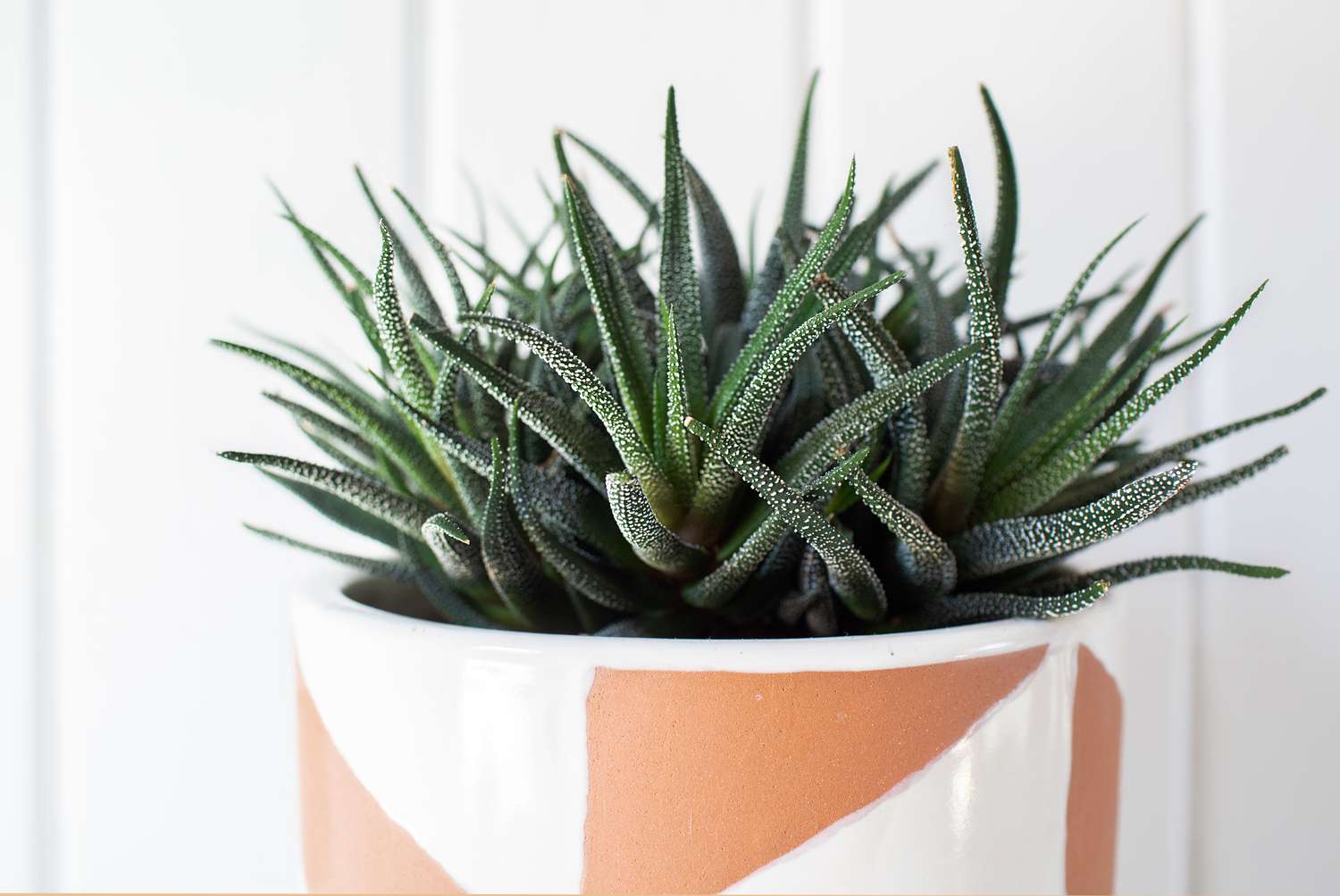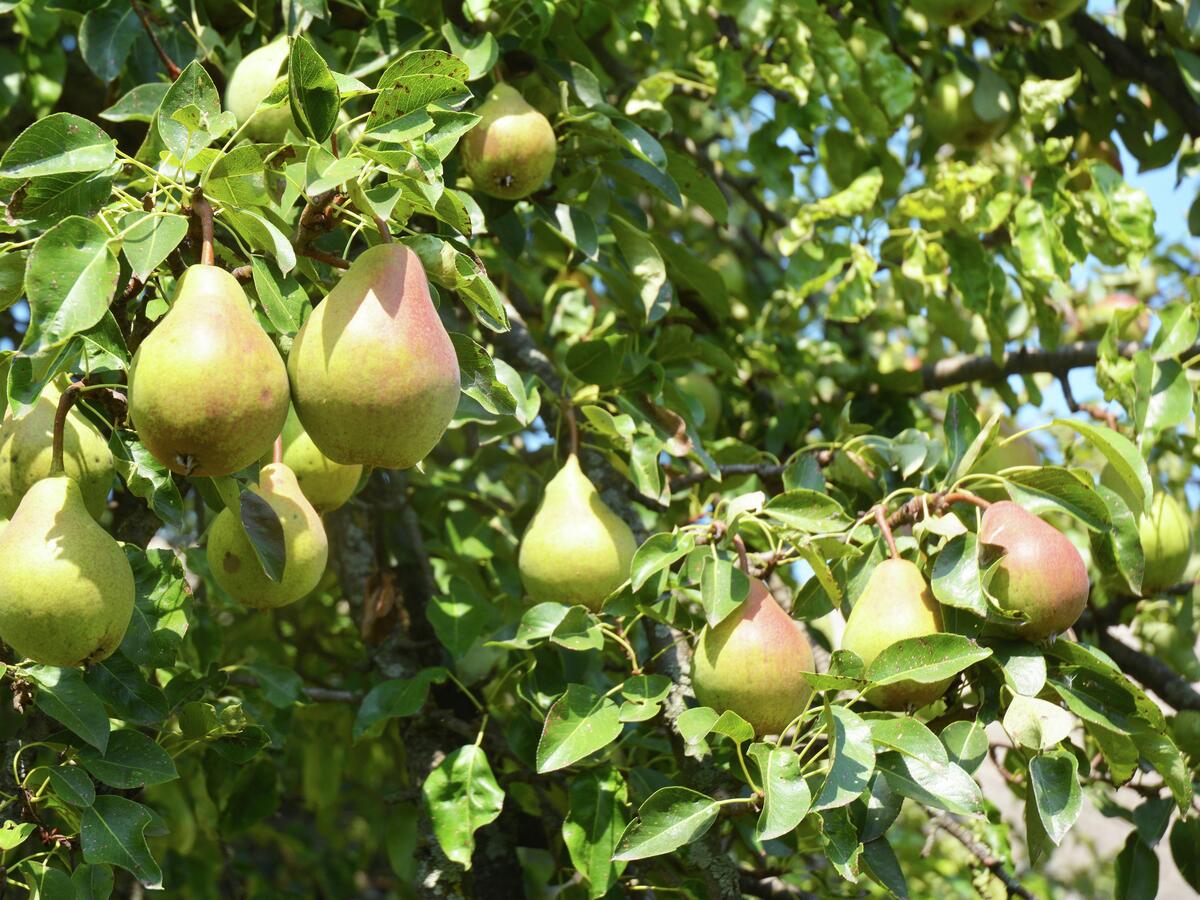Home>Types of Gardening>Ornamental Gardening>How Big Do Mammoth Sunflowers Get


Ornamental Gardening
How Big Do Mammoth Sunflowers Get
Modified: February 10, 2024
Discover the impressive heights of mammoth sunflowers in your ornamental garden. Learn how big these stunning flowers can grow and add some wow-factor to your landscape.
(Many of the links in this article redirect to a specific reviewed product. Your purchase of these products through affiliate links helps to generate commission for Chicagolandgardening.com, at no extra cost. Learn more)
Table of Contents
Introduction
Welcome to the world of ornamental gardening, where beauty, color, and nature come together to create enchanting landscapes. Among the many stunning plants that adorn our gardens, mammoth sunflowers stand tall as one of the most captivating and awe-inspiring varieties. These colossal flowers, known for their exceptional height and vibrant yellow petals, never fail to leave a lasting impression.
Mammoth sunflowers, scientifically known as Helianthus annuus, are a popular choice among garden enthusiasts for their dramatic growth and striking beauty. As their name suggests, these sunflowers have an unparalleled ability to reach impressive heights, often towering over other plants in the garden. This trait, combined with their large, radiant blooms, makes them a show-stopping centerpiece that demands attention.
What makes growing mammoth sunflowers even more appealing is their relatively easy cultivation and low maintenance requirements. Whether you are an experienced gardener looking to add a touch of grandeur to your landscape or a novice eager to embark on a rewarding gardening journey, mammoth sunflowers are an excellent choice.
Throughout this comprehensive guide, we will delve into the fascinating life cycle of mammoth sunflowers, provide valuable tips and insights for successful cultivation, address common challenges that may arise during the growing process, and explore creative ways to reap the rewards of your labor through harvesting and using these magnificent flowers.
So, get ready to embark on a marvelous journey through the world of mammoth sunflowers. This guide will equip you with the knowledge and inspiration you need to cultivate these towering beauties and transform your garden into a breathtaking haven of natural wonder.
The Life Cycle of Mammoth Sunflowers
The life cycle of mammoth sunflowers is a fascinating journey that begins with the germination of the seed and culminates in the blooming of the magnificent flower. Understanding this cycle is essential for successful cultivation and maximizing the beauty of these extraordinary plants.
1. Seed Germination: The life cycle of mammoth sunflowers begins with the planting of the seeds. Sunflower seeds are relatively large and should be sown directly into well-prepared soil. Ensure that the soil is moist, as this will help with germination. Depending on the weather conditions, germination typically occurs within 7 to 10 days.
2. Seedling Stage: Once the seeds have germinated, tiny sunflower seedlings will emerge from the soil, with their distinctive heart-shaped leaves. At this stage, it is crucial to provide proper care, including adequate water and sunlight to promote healthy growth. Protect the young seedlings from any potential threats, such as pests or extreme weather conditions.
3. Vegetative Growth: As the sunflower seedlings continue to grow, they enter the vegetative growth stage. During this phase, the plant will develop a strong stem, and more leaves will form. It is essential to ensure the sunflowers receive ample sunlight, ideally around 6 to 8 hours a day, to encourage robust growth.
4. Bud Formation: After the vegetative growth stage, the sunflower plants will begin to form buds. These buds will gradually develop at the top of the stem, where the flowerhead will eventually emerge. It’s an exciting time as you witness the anticipation of the majestic blooms to come.
5. Flowering Stage: The flowering stage is the most captivating phase of the mammoth sunflower’s life cycle. During this time, the large, golden-yellow flowerhead will fully emerge, with its iconic petals and a stunning brown center known as the disc. The flowerhead can reach an impressive diameter of up to 1 foot or more, creating an enchanting focal point in your garden.
6. Seed Production: As the flowers fade, small green seeds will begin to develop within the brown disc of the sunflower. These seeds will continue to mature and ripen over time, turning brown and hard. If you wish to harvest the seeds, it is essential to monitor their progress and wait until they are fully matured before collecting them.
The life cycle of mammoth sunflowers is a marvelous display of nature’s beauty and resilience. By understanding and appreciating each stage of this cycle, you can cultivate these majestic flowers with confidence and witness the magical transformation from seed to blossoming beauty.
Cultivating Mammoth Sunflowers
Cultivating mammoth sunflowers is a rewarding and enjoyable experience that requires some attention to detail and care. By following these essential steps, you can set the stage for successful growth and witness the awe-inspiring beauty of these towering plants.
1. Selecting the Right Location: Mammoth sunflowers thrive in full sunlight, so it is crucial to choose a location that receives at least 6 to 8 hours of direct sunlight each day. Additionally, ensure that the soil is well-draining and rich in organic matter to provide the necessary nutrients for healthy growth.
2. Preparing the Soil: Before planting, prepare the soil by removing any weeds or debris and loosening it with a garden fork or tiller. Incorporate organic compost or well-rotted manure to improve the soil’s fertility. This step will provide optimal conditions for the mammoth sunflower seeds to germinate and flourish.
3. Planting the Seeds: Plant the mammoth sunflower seeds directly into the prepared soil, spacing them about 12 to 24 inches apart. The depth of planting will depend on the size of the seed, but a general guideline is to plant them about 1 to 2 inches deep. Water the newly planted seeds gently to ensure good soil contact.
4. Watering and Maintenance: Mammoth sunflowers require regular watering, especially during hot and dry periods. Keep the soil consistently moist but not waterlogged. Mulching around the base of the plants can help retain moisture and suppress weed growth. Additionally, monitor the plants for signs of pests or diseases and take appropriate action if necessary.
5. Providing Support: As the sunflowers grow, they may need additional support to prevent them from toppling over in strong winds. Staking or using a trellis system can help provide the necessary support. Be sure to secure the plants to the support structure gently, taking care not to damage the stems.
6. Fertilizing: Mammoth sunflowers are generally low-maintenance plants but can benefit from occasional fertilization to promote healthy growth. Use a balanced, slow-release fertilizer or apply a liquid fertilizer once or twice during the growing season. Follow the package instructions for application rates.
7. Deadheading: Removing faded or spent flowers, a process known as deadheading, can encourage the development of more blooms. However, if you want to collect seeds for harvesting, leave some flowers intact to allow them to mature and produce seeds.
By following these cultivation practices, you can create an optimal environment for mammoth sunflowers to thrive. With proper care and attention, you will be rewarded with a magnificent display of towering sunflowers that will undoubtedly turn heads and brighten up your garden.
Tips for Growing Mammoth Sunflowers
While growing mammoth sunflowers can be a relatively straightforward process, implementing a few helpful tips can ensure that your sunflowers reach their full potential and provide a mesmerizing display. Consider these tips to enhance your success in growing these magnificent plants:
1. Start Indoors or Direct Sow: Mammoth sunflowers can be started indoors about 4-6 weeks before the last frost date or directly sown into the ground after the danger of frost has passed. Starting indoors gives you a head start and allows for better control over the growing conditions.
2. Thin Seedlings: If you have started your mammoth sunflower seeds indoors, thin out the weaker seedlings, leaving only the healthiest and strongest plants. This allows the remaining seedlings to have ample space and resources to grow and thrive.
3. Provide Adequate Support: Mammoth sunflowers can grow incredibly tall and heavy, so providing sturdy support is crucial. Use tall stakes, trellises, or install a sunflower frame to support the weight of the plants and prevent them from toppling over in strong winds.
4. Water Wisely: While mammoth sunflowers require regular watering, it is essential to avoid overwatering. The soil should be consistently moist but not waterlogged. Water deeply, ensuring that the water reaches the roots, and avoid watering late in the day to prevent fungal diseases.
5. Protect from Pests: Sunflowers can be susceptible to pests such as birds, squirrels, and insects. To protect your sunflowers, use netting or bird deterrents to keep birds away from the flowers and cover the flower heads with mesh bags to prevent seed predation by animals. Monitor the plants regularly for signs of insect damage and take appropriate measures to control pests.
6. Harvest Seeds at the Right Time: If you plan to harvest seeds from your mammoth sunflowers, wait until the flower heads have completely dried on the plants. The back of the flower head will turn brown, and the seeds will be plump and easy to remove. Cut the flower heads and hang them upside down in a cool, dry place to finish drying, then remove the seeds.
7. Enjoy the Blooms: Mamaoth sunflowers are not only spectacular in their final towering form but also during their blooming stage. Take time to admire the vibrant yellow petals and the intricate patterns of the disc. Consider placing seating areas near your sunflowers to create a tranquil space where you can relax and appreciate their beauty.
By following these valuable tips, you can ensure that your mammoth sunflowers grow vigorously, while also enjoying the process of tending to these glorious plants. With a little attention and care, you will be rewarded with an impressive garden adorned by these towering beauties.
Common Challenges in Growing Mammoth Sunflowers
While growing mammoth sunflowers can be a rewarding experience, it is important to be aware of potential challenges that may arise during the cultivation process. By understanding and addressing these challenges, you can increase your chances of successfully growing healthy and vibrant mammoth sunflowers. Here are some common challenges you may encounter:
1. Pests: Mammoth sunflowers are susceptible to various pests such as aphids, slugs, and snails. These pests can cause damage to the leaves, stems, and flowerheads. Monitor your plants regularly and take appropriate measures to control these pests, such as using organic pesticides or companion planting with insect-repellent herbs.
2. Diseases: Fungal diseases like powdery mildew and root rot can affect mammoth sunflowers, especially in humid or damp conditions. To reduce the risk of disease, avoid overhead watering and ensure adequate spacing between plants for proper airflow. Consider applying fungicides or using organic remedies like neem oil if necessary.
3. Wind Damage: Because of their impressive height, mammoth sunflowers are prone to wind damage. Strong winds can cause the plants to bend or even break. Provide adequate support, such as staking or using a sunflower frame, to protect your sunflowers from wind damage.
4. Bird Predation: Birds, particularly finches, are attracted to the seeds of sunflowers. While the birds play an important role in nature, they can significantly reduce the number of seeds you are able to harvest. Use netting or cover the flower heads with mesh bags to protect the seeds from birds.
5. Drought Stress: Mammoth sunflowers have high water requirements, and prolonged periods of drought can cause stress and affect their growth. Ensure consistent and deep watering throughout the growing season, especially during hot and dry periods. Mulching can also help conserve soil moisture and reduce water evaporation.
6. Nutrient Deficiencies: Like any plant, mammoth sunflowers require essential nutrients for healthy growth. Nutrient deficiencies can lead to stunted growth, yellowing leaves, and poor flower production. Regularly monitor the soil fertility and consider fertilizing with a balanced fertilizer to provide the necessary nutrients.
7. Competition with Weeds: Weeds can compete with mammoth sunflowers for nutrients, water, and sunlight. Ensure regular weeding around your sunflowers to minimize competition and give them the best chance to thrive. Applying a layer of organic mulch can also help suppress weed growth.
By being proactive in addressing these common challenges, you can mitigate their impact and ensure the successful growth of your mammoth sunflowers. With proper care and attention, you can overcome these obstacles and enjoy the breathtaking beauty of these magnificent plants in your garden.
Harvesting and Using Mammoth Sunflowers
Once your mammoth sunflowers have reached maturity and the flower heads have dried, it’s time to begin the rewarding process of harvesting their seeds. These nutritious seeds can be enjoyed as a healthy snack or used in various culinary creations. Here’s how to harvest and use mammoth sunflowers:
1. Harvesting Seeds: Wait until the flower heads are completely dry and the back of the head turns brown. Cut the flower heads using pruning shears or a sharp knife. To prevent scattering of seeds, place a paper bag over the cut flower head and gently shake or rub it to release the seeds. Alternatively, you can leave the flower heads intact and allow the birds to enjoy the seeds while creating a natural spectacle in your garden.
2. Drying Seeds: After harvesting, spread the sunflower seeds in a single layer on a clean and dry surface, such as a baking sheet or a paper towel. Allow them to air dry for several days or until the seeds are completely dry. Properly dried seeds should be firm and relatively easy to remove from the shell.
3. Removing Seeds: Once the sunflower seeds are dry, it’s time to remove them from their shells. You can do this by gently applying pressure to the seeds with your fingers or using a rolling pin to crack the shells. Another method is to soak the seeds in water overnight and then rub them between your hands to remove the shells. This process is often referred to as “winnowing.”
4. Storing Seeds: Once the seeds are removed from their shells, store them in an airtight container, such as a glass jar or a resealable plastic bag, in a cool and dry place. Properly stored sunflower seeds can last for several months to a year, depending on the storage conditions.
5. Culinary Uses: Mammoth sunflower seeds are not only delicious but also versatile in the kitchen. They can be enjoyed as a snack on their own, sprinkled over salads, used as a topping for baked goods, or incorporated into bread, granola bars, and homemade energy balls. Sunflower seed butter is another popular option, providing a tasty alternative for those with nut allergies.
6. Gardening Purposes: Mammoth sunflower heads can be used as a decorative element in flower arrangements or as a unique addition to wreaths and crafts. They can also serve as bird feeders by leaving the dried flower heads intact in your garden, attracting a variety of birds to feast on the seeds.
The process of harvesting and using mammoth sunflowers allows you to fully appreciate the beauty and value of these remarkable plants. Whether you’re enjoying the seeds as a nutritious snack or using them in creative culinary endeavors, the rewards of your efforts will provide an enduring reminder of the joy that ornamental gardening brings.
Conclusion
Cultivating mammoth sunflowers is a truly remarkable experience that brings beauty, grandeur, and a touch of awe to any garden. From the moment the seeds germinate to the towering height and vibrant blooms, these magnificent flowers never fail to mesmerize and captivate. Through understanding the life cycle, implementing proper cultivation techniques, and overcoming common challenges, you can successfully grow mammoth sunflowers and create a stunning display that delights both yourself and others.
The journey of growing mammoth sunflowers begins with careful seed selection and proper planting. Providing them with adequate sunlight, well-draining soil, and regular watering sets the stage for healthy growth. Supporting the tall stalks with sturdy stakes or trellises ensures that the sunflowers can withstand strong winds and fully showcase their exceptional height.
Along the way, you may encounter challenges such as pests, diseases, and competition from weeds, but taking proactive measures to address these issues helps nurture robust and thriving sunflowers. Harvesting the seeds at the right time allows you to enjoy the nutritious bounty that mammoth sunflowers offer. Whether you savor them as a tasty snack or incorporate them into various recipes, these seeds add a delightful touch to your culinary adventures.
Furthermore, mammoth sunflowers can be utilized beyond their seeds. Their flower heads can enhance flower arrangements, add a unique touch to crafts, or serve as natural bird feeders, attracting a colorful array of birds to your garden.
Through the journey of cultivating and utilizing mammoth sunflowers, you’ll not only witness their breathtaking beauty but also develop a deeper appreciation for the wonders of nature and the joy of gardening. The perseverance and care you invest in growing these towering wonders will reward you with a sense of accomplishment and a stunning landscape that leaves a lasting impression on all who behold it.
So, dig your hands into the soil, sow the seeds, and watch in awe as your garden transforms into a haven of mammoth sunflowers, a testament to the power and beauty of ornamental gardening.










